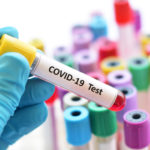
The Intersection of Men and Women’s Health in In-Vitro Diagnostics
Health is influenced by various biological, environmental, and social factors, leading to different health challenges and outcomes for men and women. In-vitro diagnostics (IVD) are vital in detecting diseases, monitoring health conditions, and personalizing treatment plans. This blog delves into the distinctions in men’s and women’s health, highlighting the role of IVD, and backed by relevant statistics and data.
Men’s Health: Key Issues and Data
Men face unique health issues that significantly impact their morbidity and mortality rates. Key health concerns include cardiovascular diseases, prostate cancer, and mental health disorders.
- Cardiovascular Diseases (CVD): CVD is the leading cause of death among men. According to the CDC, about 1 in 4 male deaths is due to heart disease. Risk factors include high blood pressure, high cholesterol, smoking, and a sedentary lifestyle. Preventive measures such as regular exercise, a healthy diet, and routine check-ups are essential for reducing these risks.
- Prostate Cancer: The American Cancer Society reports that approximately 1 in 9 men will be diagnosed with prostate cancer during their lifetime. Early detection through screenings like the prostate-specific antigen (PSA) test can significantly improve outcomes. Advanced prostate cancer requires more aggressive treatments, underscoring the importance of early diagnosis.
- Mental Health: Men are less likely to seek mental health support. The National Institute of Mental Health (NIMH) indicates that men are nearly four times more likely to die by suicide than women. This disparity is partly due to societal expectations and stigma surrounding mental health, discouraging men from seeking help. Efforts to reduce stigma and increase awareness are crucial for improving mental health outcomes in men.
Women’s Health: Key Issues and Data
Women’s health issues are often influenced by reproductive health, hormonal changes, and social determinants of health.
- Breast Cancer: Breast cancer is the most common cancer among women globally. The World Health Organization (WHO) states that 1 in 8 women will be diagnosed with breast cancer in their lifetime. Regular screenings, including mammograms, can detect breast cancer early, leading to better treatment outcomes. Research continues to explore genetic factors, such as BRCA1 and BRCA2 mutations, which significantly increase the risk of breast cancer.
- Cardiovascular Diseases: Although often under-recognized, CVD is also the leading cause of death for women. The American Heart Association reports that it accounts for 1 in 3 female deaths. Women may experience different heart attack symptoms than men, such as nausea and back pain, which can delay seeking treatment. Increasing awareness about these differences is essential for improving early intervention and survival rates.
- Mental Health: Women are more likely to experience anxiety and depression. The Anxiety and Depression Association of America (ADAA) notes that women are twice as likely to be affected by these conditions. Hormonal changes, such as those occurring during pregnancy, menopause, and menstrual cycles, can influence mental health. Access to mental health services and support networks is crucial for managing these conditions effectively.
The Role of In-Vitro Diagnostics in Health Management
In-vitro diagnostics (IVD) are tests performed on samples taken from the human body, such as blood or tissue, to detect diseases, conditions, or infections. They are essential for the early detection and management of health conditions, particularly in personalized medicine.
IVD in Men’s Health
- Prostate-Specific Antigen (PSA) Test: This blood test measures the level of PSA in the blood and is used to screen for prostate cancer. Early detection through PSA testing has significantly improved prostate cancer prognosis. Studies show that PSA screening can reduce prostate cancer mortality by up to 20-30% among men aged 55 to 69.
- Lipid Profile Test: This test measures cholesterol levels and is crucial for assessing the risk of cardiovascular diseases in men. Elevated cholesterol levels are a major risk factor for heart disease and stroke. Regular lipid profile testing helps in the early detection and management of dyslipidemia, thereby reducing cardiovascular events.
IVD in Women’s Health
- Mammography: A type of imaging test, mammography is essential for the early detection of breast cancer. Regular screenings have been shown to reduce breast cancer mortality by 20-40% among women aged 40 to 74. Advances in digital mammography and 3D imaging techniques have further improved detection rates, especially in women with dense breast tissue.
- Pap Smear and HPV Testing: These tests are vital for the early detection of cervical cancer. The introduction of HPV testing has enhanced the accuracy and effectiveness of cervical cancer screening programs. Regular screenings can detect precancerous changes in the cervix, allowing for early intervention and preventing the progression to cancer.
Statistics and Data on IVD Effectiveness
Cancer Screening
- Prostate Cancer: Studies have shown that PSA testing can reduce prostate cancer mortality by 20-30% among men aged 55 to 69. The widespread use of PSA testing has also led to an increase in the detection of early-stage prostate cancer, which is more treatable.
- Breast Cancer: Regular mammography screenings can reduce breast cancer mortality by 20-40% among women aged 40 to 74. The adoption of mammography as a standard screening tool has led to a significant decline in breast cancer deaths over the past few decades.
Cardiovascular Disease
- Cholesterol Testing: Lipid profile testing has been instrumental in reducing the incidence of heart attacks and strokes by facilitating early intervention. Patients identified with high cholesterol can be managed with lifestyle changes and medications, significantly lowering their risk of cardiovascular events.
Infectious Diseases
- HIV Testing: IVDs have significantly improved HIV diagnosis and management, contributing to a decrease in HIV-related mortality and transmission rates. Early detection through IVDs allows for timely initiation of antiretroviral therapy, improving the quality of life and longevity of HIV-positive individuals. The CDC reports that routine HIV testing and early treatment have reduced HIV transmission rates by more than 80% in some populations.
Challenges and Future Directions
Despite the advancements, challenges remain in the field of IVD, including access to testing, cost, and the need for continued innovation.
- Access and Equity: Disparities in access to healthcare services, including IVD, exist between different populations and geographic regions. Efforts to increase access to affordable and reliable diagnostic tests are essential for improving global health outcomes.
- Cost: The high cost of some diagnostic tests can be a barrier to widespread use. Reducing costs through technological innovation and healthcare policy reforms can make these tests more accessible.
- Innovation: Continuous innovation in IVD is crucial for addressing emerging health threats and improving existing diagnostic methods. The development of point-of-care diagnostics, which provide rapid results at the site of patient care, represents a significant advancement in this field.
The Future of Personalized Medicine
Personalized medicine, driven by advancements in IVD, holds promise for more effective and tailored health interventions. By understanding an individual’s genetic makeup, lifestyle, and environment, healthcare providers can develop personalized treatment plans that improve outcomes and reduce adverse effects.
- Genetic Testing: Genetic testing can identify individuals at high risk for certain diseases, allowing for proactive monitoring and preventive measures. For example, women with BRCA1 or BRCA2 gene mutations can benefit from more frequent screenings and preventive surgeries to reduce their risk of breast and ovarian cancer.
- Biomarker Development: The identification and validation of new biomarkers can enhance the precision of IVDs. Biomarkers can provide insights into disease progression, treatment response, and prognosis, facilitating more personalized treatment strategies.
Conclusion
The health challenges faced by men and women are distinct, yet both benefit significantly from advancements in in-vitro diagnostics. Through early detection and personalized treatment, IVDs are improving health outcomes and quality of life. Continued research and development in this field will be crucial in addressing the evolving health needs of both men and women. As we move towards a future of personalized medicine, the role of IVD will only become more integral in providing effective and equitable healthcare.







